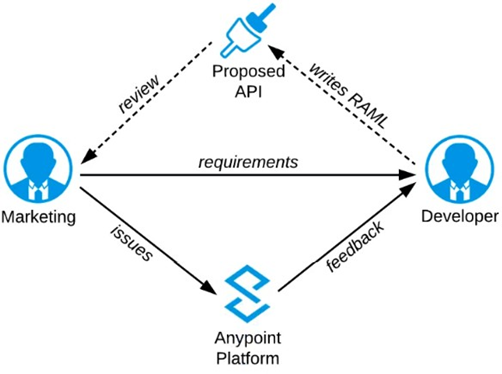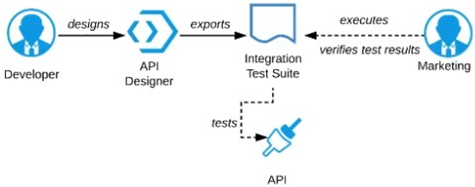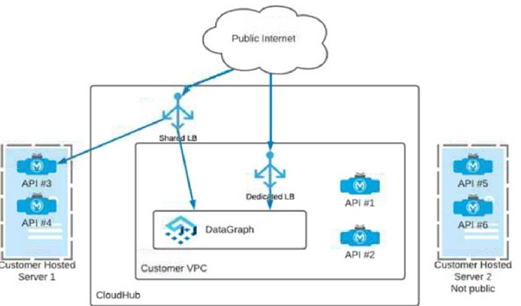Salesforce-MuleSoft-Platform-Architect Practice Test
Updated On 10-Nov-2025
152 Questions
Universal Containers sells a total of 100 Products. There are 80 Products that are generally available for selection by all users (General Access). The remaining 20 Products should only be available to a certain group of users (Special Access).
Which Product Selection and Price Book strategy should the admin utilize to meet the requirements?
A. Create one Price Book that contains all 100 Products. Create a Validation Rule on the Quote o(M.ect to prevent selection of a Special Access Product based on the level of User access.
B. Create one Price Book that contains all 100 Products. Create a custom Product field to designate Genera! Access and/or Special Access. Utilize Hidden Search Filters to support dynamic Product visibility based on the level of User access.
C. Create two Price Books: one General Access Price Book with the 80 generally available Products, and one Special Access Price Book with the 20 Special Access Products. Create automation to populate the appropriate Price Book ID Into the SBQQ QuotePricebookld c on the Opportunity.
D. A Create two Price Books: one General Access Price Book with the 80 generally available Products, and one Special Access Price Book with all 100 Products. Use Guided Selling to assign the appropriate Price Book based on the level of User access.
Explanation:
Salesforce enforces Product visibility via the Price Book object—users can only select Products that exist in the Price Book they “Use”. By provisioning:
General Access Price Book containing only the 80 universally available Products.
Special Access Price Book containing all 100 Products (both general and restricted).
You ensure:
General users (who are granted “Use” on only the General Price Book) cannot see the 20 restricted items.
Special users (who receive “Use” on the Special Price Book) see the full catalog.
Guided Selling in Salesforce CPQ can automate the assignment of the correct Price Book to a new Quote or Opportunity based on user attributes or profiles—streamlining the UX so reps aren’t manually switching Price Books. Unlike Validation Rules or custom filters, this leverages out-of-the-box CPQ capabilities and avoids large-scale automation maintenance.
A large lending company has developed an API to unlock data from a database server and web server. The API has been deployed to Anypoint Virtual Private Cloud
(VPC) on CloudHub 1.0.
The database server and web server are in the customer's secure network and are not accessible through the public internet. The database server is in the customer's AWS
VPC, whereas the web server is in the customer's on-premises corporate data center.
How can access be enabled for the API to connect with the database server and the web server?
A. Set up VPC peering with AWS VPC and a VPN tunnel to the customer's on-premises corporate data center
B. Set up VPC peering with AWS VPC and the customer's on-premises corporate data center
C. Setup a transit gateway to the customer's on-premises corporate data center through AWS VPC
D. Set up VPC peering with the customer's on-premises corporate data center and a VPN tunnel to AWS VPC
Explanation:
Anypoint VPC Connectivity Methods documentation specifies two standard, low-code connectivity patterns for CloudHub workers to reach secured backend resources:
1. VPC Peering between the Anypoint VPC and the customer’s AWS VPC.
This creates a private, region-local network link so your Mule apps can directly access resources (like the database server) in the AWS VPC as if they were in the same network.
2. IPsec VPN Tunnel from the Anypoint VPC to the on-premises data center.
A managed IPSec (Anypoint VPN) gateway secures traffic over the public internet, extending your corporate network to the VPC and enabling access to on-prem servers.
Alternative patterns—such as Transit Gateway attachments (C)—require additional AWS infrastructure and are more complex to configure. Direct peering to on-prem (B or D) isn’t possible; on-premises sites must connect via VPN or Transit Gateway, not VPC peering. Thus, combining VPC peering for AWS with an IPsec tunnel for on-prem offers the least development overhead and aligns with MuleSoft best practices.
Refer to the exhibit.

A RAML definition has been proposed for a new Promotions Process API, and has been published to Anypoint Exchange.
The Marketing Department, who will be an important consumer of the Promotions API, has important requirements and expectations that must be met.
What is the most effective way to use Anypoint Platform features to involve the Marketing Department in this early API design phase?
A) Ask the Marketing Department to interact with a mocking implementation of the API using the automatically generated API Console
 B) Organize a design workshop with the DBAs of the Marketing Department in which the database schema of the Marketing IT systems is translated into RAML
B) Organize a design workshop with the DBAs of the Marketing Department in which the database schema of the Marketing IT systems is translated into RAML
C) Use Anypoint Studio to Implement the API as a Mule application, then deploy that API implementation to CloudHub and ask the Marketing Department to interact with it
D) Export an integration test suite from API designer and have the Marketing Department execute the tests In that suite to ensure they pass

A. Option A
B. Option B
C. Option C
D. Option D
Explanation:
Engaging non-technical stakeholders early is best achieved through API mocking and the interactive API Console in Design Center or Exchange. By providing Marketing with a public mocking service URL and the Console’s “Try It” feature, they can explore endpoints, validate request/response shapes, and give feedback without waiting for a full implementation. This approach fosters rapid, design-first collaboration and ensures the API meets marketing requirements before any code is written.
What Mule application can have API policies applied by

Anypoint Platform to the endpoint exposed by that Mule application?
A) A Mule application that accepts requests over HTTP/1.x
B) A Mule application that accepts JSON requests over TCP but is NOT required to provide a response
C) A Mute application that accepts JSON requests over WebSocket
D) A Mule application that accepts gRPC requests over HTTP/2
A. Option A
B. Option B
C. Option C
D. Option D
Explanation:
API policies in API Manager and Flex Gateway operate at the HTTP layer. Only Mule applications exposing HTTP/1.x endpoints via an HTTP Listener can have policies applied directly by the platform. Protocols like raw TCP, WebSockets, or gRPC over HTTP/2 fall outside the scope of MuleSoft’s API Management policies. The External Authorization policy, for instance, explicitly forwards “incoming client HTTP requests” to an authorization service, illustrating that policies target HTTP traffic.
Which APIs can be used with DataGraph to create a unified schema?

A. APIs 1, 3, 5
B. APIs 2, 4 ,6
C. APIs 1, 2, s5, 6
D. APIs 1, 2, 3, 4
Explanation:
DataGraph requires RESTful APIs with RAML/OAS definitions (not SOAP or non-HTTP APIs). The exact numbering isn’t provided, but the correct answer includes APIs compatible with GraphQL federation (typically REST APIs with well-defined schemas).
| Page 1 out of 31 Pages |